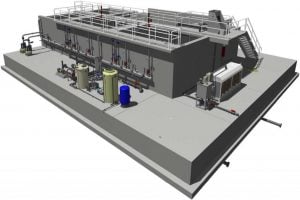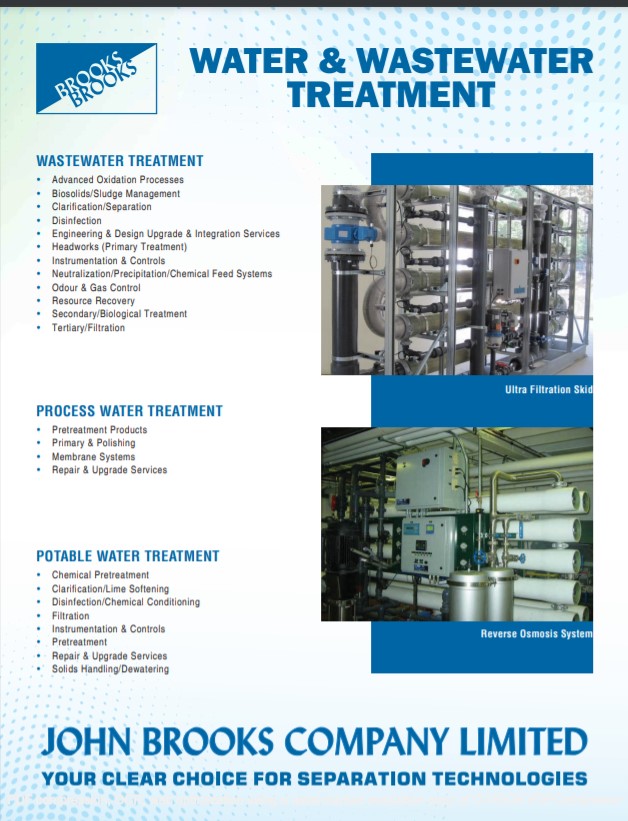Membrane Bioreactors combine conventional biological treatment processes with membrane filtration to provide an advanced level of organic and suspended solids removal. When designed accordingly, these systems can also provide an advanced level of nutrient removal. In an MBR system, the membranes are submerged in an aerated biological reactor. The membranes have porosities ranging from 0.02 microns to 0.4 microns (depending on the membrane selected), which is considered between micro and ultra filtration.
This level of filtration allows high-quality effluent to be drawn through the membranes and eliminates the sedimentation and filtration processes typically used for wastewater treatment. Because the need for sedimentation is eliminated, the biological process can operate at a much higher mixed liquor concentration. This dramatically reduces the process tankage required and allows many existing plants to be upgraded without adding new tanks. To provide optimal aeration and scour around the membranes, the mixed liquor is typically kept in the 1.0-1.2% solids range, which is 4 times that of a conventional plant.
The membrane bioreactor has several distinct advantages over the Extended Aeration (EA) and Sequencing Batch Reactor (SBR) systems that make most regulatory agencies look favorably on MBRs, especially for small plants in environmentally sensitive areas. However, since the equipment is more costly than conventional plants, it is not the appropriate technology for every application. The key advantages of MBRs are that they provide a higher level of treatment and are much more resistant to upsets due to fluctuating influent flows. In addition, the MBR system can be designed to have a smaller footprint.
Benefits of MBRs
- Hydraulic Retention Time (HRT) of 4-8 Hours vs 16-24 Hours
- Solids Retention Time (SRT) of 15-365 Days, Can Vary Based on Flow without Negative Process Impact
- MLSS of 10-15,000 MG/L
- Sludge Yield of 20-40% less than Conventional
- Footprint of 25% Conventional Plant
- Modular Expandability
- Highest Quality Effluent
- Capable of Meeting AWT Standards for Nutrient Removal
- Barrier to Giardia/Crypto
- Less Susceptible to Upsets Due to Flow Variations
- Less Odor
- Simple, yet Sophisticated

